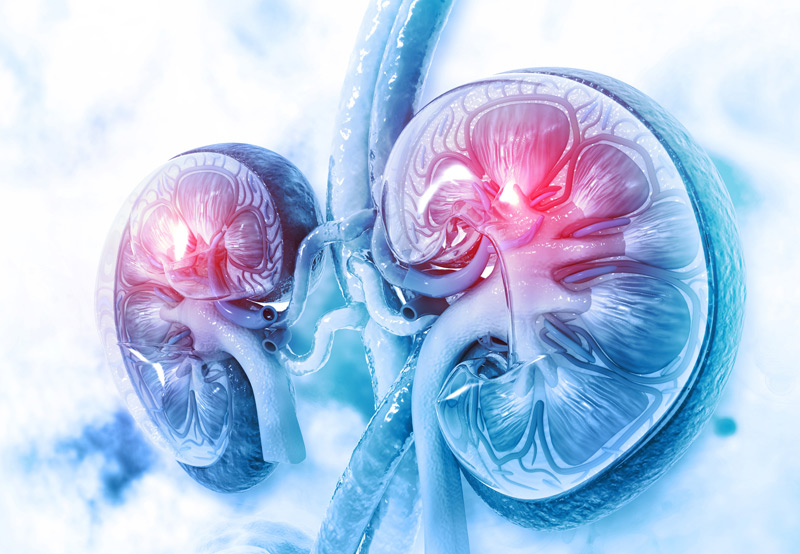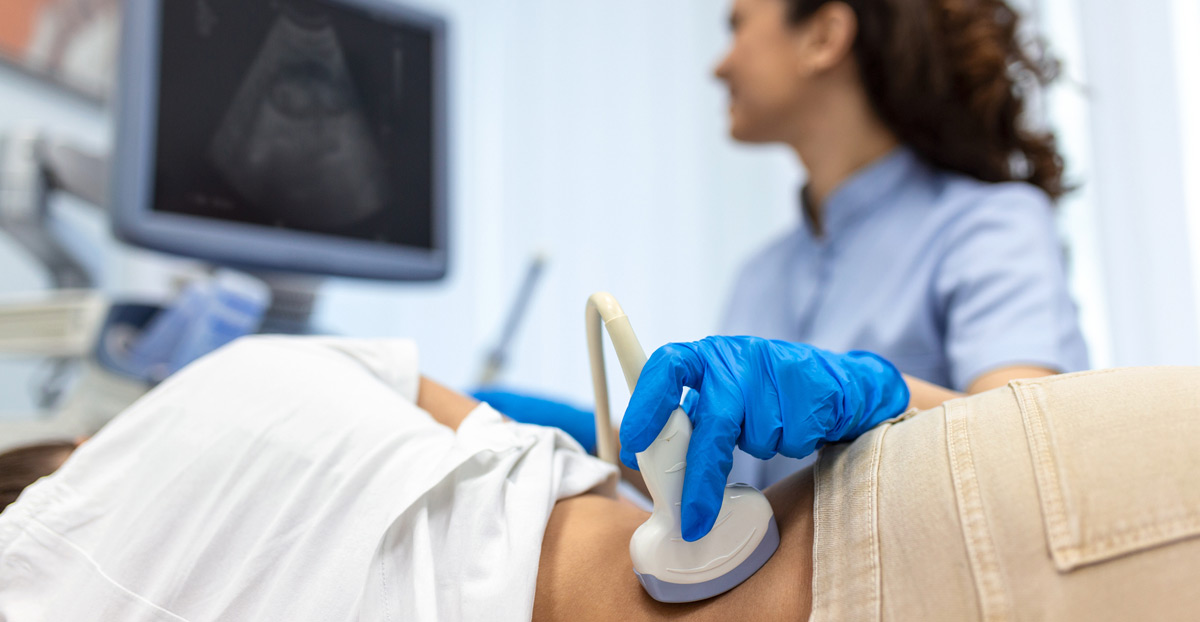

Kidney cancer is any type of growth, including one that’s benign, that has the potential to impair kidney function, including filtration of salts, waste products, and fluids. Renal cell carcinoma is the most common type of kidney cancer, affecting small tubes in one or both bean-shaped kidneys.
When caught early, many forms of kidney and urinary tract cancer can be effectively treated.
Signs and Symptoms of Kidney Cancer
The early stages of kidney cancer may not cause any symptoms. But as the tumor grows, patients may experience:
- A loss of appetite or weight loss for no apparent reason
- Extreme or lingering fatigue
- Anemia
- Blood in urine
- Ankle swelling
- Fever
Larger tumors may produce a noticeable lump on the side or in the abdomen.
Kidney cancer that has spread to other parts of the body may cause shortness of breath and other respiratory issues or bone pain.

Causes and Risk Factors
The cause of benign or malignant tumors within the kidneys or the urinary tract is unclear. What is known, however, is that several factors can increase the risk of developing abnormal growths within the kidneys.
For example, smoking increases the odds of developing renal cell carcinoma. Excess weight may lead to hormonal changes that could contribute to the development of cancerous growths. Kidney cancer is twice as likely to affect men than women, and is associated with the following risk factors:
- Long-term use of certain medications
- Advanced kidney disease
- High blood pressure
- Long-term dialysis treatment
- Exposure to certain herbicides and solvents
Diagnosing Kidney Cancer
In 30 to 40 percent of cases, smaller growths detected in the kidneys or urinary tract are benign. Patients with larger tumors are more likely to have a malignant mass. A renal mass may be diagnosed with a CT scan or MRI, urine and blood tests, or an intravenous pyelogram (IVP) done with a special dye. A renal arteriogram may be done to test the blood supply to the tumor.
Though a biopsy isn’t always necessary to diagnose kidney cancer, a tissue sample may still be taken for greater accuracy.
Treatment Options
Once a growth has been discovered, the urologist will use follow-up imaging tests three to six months later to see if the tumor has grown or decreased in size. If the tumor hasn’t changed in size or shape, the patient may only need continued observation. But if the growth is causing problems with urination, the patient may need treatment.
To treat a growing or cancerous tumor, the urologist may recommend one or more of the following:
- Removal of the affected kidney, the adrenal gland, and nearby tissue (radical nephrectomy)
- Removal of the kidney only (simple nephrectomy)
- Percutaneous cryoablation performed with a needle-like probe inserted through the skin. In rare cases, patients may experience spontaneous remission.
Traditionally, renal cancer was only diagnosed when patients began to exhibit clear symptoms, such as blood in urine or abdominal pain. Today, ultrasounds and similar image-based tests may be used to detect kidney cancer. These tests may be ordered by a urology specialist if a patient is reporting unusual symptoms indicating issues with the urinary tract or kidneys.
